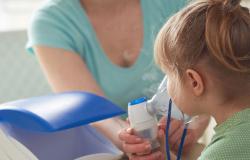
Fever, headache, malaise and weakness. These are some common symptoms of several diseases, such as dengue fever, which is caused by the bite of the female Aedes aegypti mosquito. The information is from the Ministry of Health. Vale do Paraíba has had 98 thousand cases of the disease and 93 deaths.
Click here to be part of the OVALE community on WhatsApp and receive first-hand news. And click here to also join the OVALE channel on WhatsApp.
It is a domestic insect, which lives in or around homes or other places frequented by people, such as commercial establishments, schools or churches, for example.
Normally, the first manifestation of dengue fever is a high fever, with an abrupt onset, which generally lasts from two to seven days, accompanied by headache, body and joint pain, as well as prostration, weakness, pain behind the eyes and spots. red on the skin.
TYPES
The dengue virus presents variations in its structure, which means it has different serotypes and viral lineages. To date, five serotypes and 18 lineages of the dengue virus are known. In Brazil, dengue serotypes 1, 2, 3 and 4 circulate.
After infection with a type of dengue virus, the body becomes permanently immune to that serotype. But infection with one serotype does not protect against the others. For this reason, each person can become infected with the dengue virus four times.
The predominance of one or another dengue serotype varies in different regions and over time. In this case, it depends on the dissemination capacity and the percentage of people not yet infected by that serotype.
Any of the four dengue serotypes (1, 2, 3 and 4) can produce asymptomatic infections or mild, severe cases and even deaths.
Type 1: identified for the first time in 1981, in isolated cases in Roraima. It began to circulate in other regions of the country in 1986.
Type 2: identified in 1990. Types 1 and 2 have predominated in the last four years.
Type 3: isolated in 2000 and remained the most common serotype in the country until 2016.
Type 4: identified in isolated and restricted cases in the North region in 1981, however, after 2010, it began to be identified in other parts of Brazil.
Type 5: appeared for the first time in 2007, in Malaysia, on the Asian continent. To date, no case has been identified in Brazil.
The development of severe dengue can occur with any of the types of the virus, especially after the second infection. In these cases, the immune system may react more strongly and excessively.
Check out the characteristics of dengue below:
High fever
Body and joint pain
Pain behind the eyes
Malaise
Headache
Red spots on the body.
Dengue warning signs are mainly characterized by:
Severe and continuous abdominal pain
Persistent vomiting
Liquid accumulation
Mucosal bleeding
Irritability
Blood tests showing dehydration and a significant drop in the number of platelets.
Ultrasound examinations showing the presence of free fluids in cavities (pleural, peritoneal, cardiac effusions).
If you are experiencing any of these symptoms, it is essential to go to a health service for a medical evaluation.
SEVERE DENGUE
In these cases, in addition to the intensification of warning signs, the person may also feel:
Very low blood pressure.
Difficulty breathing.
Bleeding.
Faced with any of these symptoms, regardless of their intensity, it is essential to seek a healthcare service. After all, with the correct diagnosis and proper treatment, the chances of success and cure are greater. Remembering that care and treatment are the same for all dengue serotypes.





